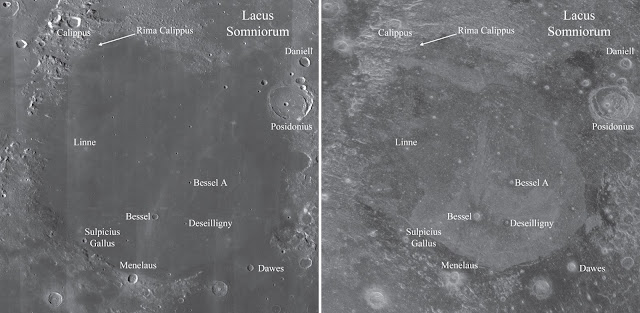Lunar Scattering Law
Comparison of images of Mare Serenitatis, in visible (right) and high-resolution 70cm radar (left). (Source)
The term "Scattering law" refers to a description of the scattering behavior of any given object. A visual image of the Moon shows patterns of light and dark, a combination of light reflecting off different geology (mare, made up of less reflective minerals) and also different topography (rougher surfaces have less actual surface area reflecting light back in our direction, so they appear darker).
If you blast a surface with electromagnetic waves of different wavelengths, you'll get a different signature of this scattering behavior, as shown in the above picture.
All in all, the scattering law gives you a combination of surface information: the reflective qualities of the rock and the roughness of the surface. It is a measure of the reflection coefficient of the surface times the proportion of the surface aligned toward you.
Lunar scattering laws with 50 MHz radar, plotted by intrepid UiT scientists. (Source)
For a general overview of surface properties, this information can also be compressed into a single 1-D plot, as shown above. You can then "read" this plot to gain a broad understanding of characteristics of the lunar surface. A smoother surface will have a flatter central curve, with steep declines at the edges. As the surface gets more rough, the central curve gets steeper, approaching a straight line.
Our upcoming measurements of the Moon will aim to create this scattering law at 5.4 MHz. With a lower frequency radar, we will get a more general overview of the scattering properties of the Moon, which we can compare and contrast to previous, more detailed measurements.*
Further bulletins as events warrant!
~~~~~~~~~
* And check for mysterious bumps!





Comments
Post a Comment